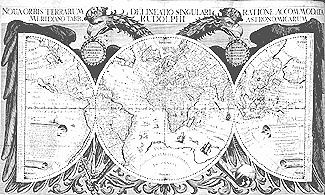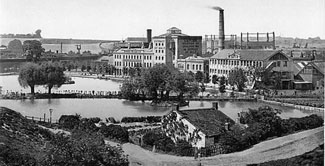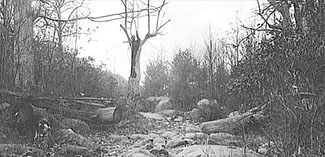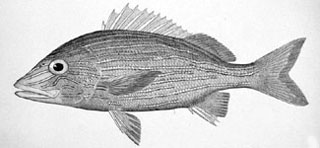[Culture, Courage, Ideals, and Joyful Sympathy] ....... 399
[One Last Example]..................................................... 400
Related Ideas ........................................................................ 403
Index ..................................................................................................... 404
Colophon .............................................................................................. 414
Reading For Philosophical Inquiry: A Brief Introduction
xv

Chapter 1
“Preface”
Tabulae Rudolphinae : quibus astronomicae. . . by Johannes Kepler, 1571-
1630, NOAA
Why Open Source?
Almost all classic major works in philosophy and literature are accessi-
ble via online sources on the Internet. Fortunately, many of the influential
and abiding works in philosophy are in the public domain; these read-
ings provide a convenient way to produce quality learning experiences for
almost anyone seeking information and help. Our present collection of
edited readings is free, subject to the legal notice following the title page.
1
Chapter 1. “Preface”
By placing these selections in the public domain under the GFDL, this
product is being open-sourced, in part, to minimize costs to interested stu-
dents of philosophy and, in part to make it widely available in a form
convenient for a wide variety of readers. Moreover, users themselves can
improve the product if they wish to do so. Viewed in this way, the release
of these readings is in a genuine sense a small test of the Delphi effect in
open source publishing.
This particular edition should not be viewed as a completed work. It is
the first step in the development of the open-source text. The develop-
ment model of Reading for Philosophical Inquiry is loosely patterned
on the “release early, release often” model championed by Eric S. Ray-
mond.1 With the completion of version 1.0, various formats of this work
can be made available for distribution. If the core reading and commentary
prove useful, the successive revisions, readings, commentary, and other
improvements by users can be released in incrementally numbered “sta-
ble”versions.
A Note about Selections
Reading selections in this collection of papers are often selections with
deletions of text im passim; consequently, the ideas of the writers are ex-
amined out of their literary and historical context. The main focus for our
approach to philosophy, however, is not so much on historical understand-
ing as it is on the use of those germinal ideas which spark thinking about
some significant issues of life and thought.
In general, as the difficulty of the reading increases, the length of the se-
lection decreases. The primary consideration of selection and inclusion is
to introduce primary sources accessible for a wide variety of readers, in-
cluding high school and homeschooling students. In addition to this core
set of readings, supplementary readings are in process of publication.
Please send questions or inquiries of interest to the “Editors” at
<philbook@philosophy.lander.edu>
1.
Eric
Raymond.
The
Cathedral
and
the
Bazaar.
Sebastopol,
CA:
O’Reilly & Associates, 1999. Online at The Cathedral and the Bazaar
(http://www.catb.org/~esr/writings/cathedral-bazaar/)
2
Reading For Philosophical Inquiry: A Brief Introduction
Chapter 1. “Preface”
Reading For Philosophical Inquiry: A Brief Introduction
3

Part I. Personal Uses of
Philosophy
Dartford, Messrs. Burroughs, Wellcome & Co.’s Factory, London and sub-
urbs, England, Library of Congress
In this introduction to philosophical thinking, we will read some essays
specially chosen from four main areas of interest: (1) the philosophy of
life, (2) the philosophy of religion, (3) ethics, and (4) metaphysics and
theory of knowledge. Although our approach is not comprehensive, it is
reasonably representative of some of the more significant areas of philo-
sophical inquiry. The readings are intended to illustrate the interrelations
between these subject areas of philosophy and, as well, to provide the
foundations for future investigations of these and related problems.
Since the study of philosophy involves working with concepts rather than
facts, the activity of philosophy seeks understanding rather than knowl-
edge. In other words, emphasis in this course of study is placed on the
reasoning process. Memorizing the subject matter of philosophy is less
likely to give insight into the discipline than is engaging actively in pro-
cess doing philosophy.
In order to make the most of the present opportunity, it will be helpful
if we can invoke what has been called the principle of charity as we ap-
proach new ways of looking at things. That is, we ought to attempt to set
aside, provisionally and temporarily, preconceptions about the philosoph-
ical views presented—especially when our initial reaction is to disagree.
While suspending our own beliefs and tolerating for the moment any am-
biguity and inconsistencies, we can obtain an accurate, sympathetic un-
derstanding of the presentation of ideas. In many instances, invoking the
principle of charity takes some acculturation.
For examlpe, as Bertrand Russell notes in his essay in the first part of this
set of readings, our experience can be broadened and our thinking can be
enriched. Once ideas are well understood, only then, can they be meaning-
fully analyzed, critiqued, or evaluated. Philosophical inquiry might not be
the be-all and end-all of a good life, yet, to paraphrase Socrates’s view in
our first reading, a life worth living is an “examined life.”
We begin our study of philosophy in Part I by first discussion the nature of
learning and the different perspectives insightful understanding can entail.
The nature of philosophical disagreement then is sketched, and philosophy
is distinguished from other kinds of inquiry. Philosophy as a discipline
is characterized, and its major branches are elaborated and illustrated. A
preliminary definition describes philosophy as an inquiry into the basic
assumptions of any field of interest.
In Part I, a brief overview of the nature of philosophy is sketched before we
begin our inquiry into questions concerning some of the personal uses of
philosophy. In the first two chapters, a traditional overview of some of the
main parts of philosophy introduces some important terms and approaches
used in our study. These chapters represent a personal characterization of
philosophy; some philosophers might warmly disagree with our beginning
description.
In these first readings, we consider several different perspectives on the
applications of philosophical methods of thought. These ways of thinking
can radically affect how we think and live. For instance, the philosophers
Socrates and Bertrand Russell emphasize the role of insight and under-
standing in our efforts to live well and do well in the affairs of the world,
whereas Albert Camus and Leo Tolstoy emphasize the role of will to es-
tablish a meaning for our lives. Even if the purpose and the significance of
the universe itself cannot be known, Tolstoy and Camus believe our lives
can have meaning.
Socrates enjoins us to think and do only what is right; if we do so, he thinks
no harm can come to a us. He assumes that if we know how to live well
and do well, we will attempt to do so. Initially, his doctrine appears naive,
until we realize he is not denying that many unfortunate things happen to
good people, nor that many fortunate things happen to ignorant people.
On Socrates’ point of view, we can endure physical pain as well as life’s
vicissitudes without great difficulty; the genuine pain in life is the harm
to the soul or mental anguish occurring from our lack of self-knowledge.
He believes individual excellence is accomplished by “tending our soul,”
seeking insight, and doing what’s right.
Certainly, in any life, faith as well as reason play a part. On the one
hand, Bertrand Russell explains how understanding synoptic philosophy
enlarges our world by showing unexpected dimensions of life. Russell em-
phasizes the rôle of reason in a life of self-enlargement. Self-enlargement
involves a healthy skepticism, a sympathetic understanding, and a respect
for all modes of understanding. On the other hand, Leo Tolstoy concludes
from his personal crisis only faith, not philosophy, can provide authentic
meaning for our lives. Philosophy, he believes, is limited by rational under-
standing, art is in a fundamental sense a distraction from life, and science
reduces the meaning of human existence to the trivial. Tolstoy, unlike Rus-
sell, believes our relation to the infinite is only meaningful through faith’s
irrational knowledge.
We conclude the reading in this section with an introduction to the thought
of Albert Camus. Albert Camus believes the fundamental question of phi-
losophy is not the choosing of a philosophical way of living or even of
seeking a philosophical way of understanding. Instead, by choosing to im-
pose a value on our lives, Camus illumines the “absurdity” of the human
predicament: the objectivity of the external world can never measure or
reflect the the subjectivity of human existence.
Where to go for help
Notes, quizzes, and tests for many of the selections from this part of the
readings, “Personal Uses of Philosophy,” can be found at Philosophy
of Life (http://philosophy.lander.edu/intro/life.html).

Chapter 2
The Nature of Learning:
Recognition of Different
Perspectives
Road to Nicholson Hollow, Shenandoah National Park, Virginia, Library
of Congress
Ideas of Interest From “The Nature of
Learning”
1. Explain what John Dewey means when he points out, “The ideal of
using the present simply to get ready for the future contradicts itself.”
4
Chapter 2. The Nature of Learning: Recognition of Different Perspectives
2. Samuel Scudder writes, “. . . what I had gained by this outside expe-
rience has been of greater value than years of later investigation. . . .”
What is it that Samuel Scudder thinks he learned by studying with
Professor Agassiz?
3. If we seek an explanation for a state of affairs, how do we select the
relevant facts of the situation? Does an explanatory theory need to be
based on all of the facts in order to be true?
4. How does Samuel Scudder’s experience illustrate the view that phi-
losophy begins when “we don’t know our way about?”
5. Discuss whether or not Tycho Brahe and Nicolaus Copernicus see the
same thing at dawn.
The Role of Facts In Understanding
Our introduction to philosophical inquiry is designed to illustrate some
of the basic methods of thinking about different modes of understanding.
Its purpose is not only to present some of the most profound ideas from
thinkers of the past but also to suggest specific methods of analysis and
to encourage the use of creative thinking. Philosophy is an investigation
of the fundamental questions of human existence. Such questions include
wondering about such things as the meaning of life, what kinds of things
the universe is made of, whether there can be a theory of everything, how
we can know what’s the right thing to do, and what is the beautiful in life
and art. Other disciplines are concerned with these sorts of questions also,
but philosophers, more often than not, either attempt to provide adequate
reasons and justifications for their beliefs or attempt to clarify and examine
the basis for those beliefs.
From the reading. . .
“. . . only by extracting at each present time the full meaning of each
present experience are we prepared for doing the same thing in the
future.”
An attempt has been made to select readable and enjoyable essays to help
develop these approaches, even though many of the constitutive philosoph-
Reading For Philosophical Inquiry: A Brief Introduction
5
Chapter 2. The Nature of Learning: Recognition of Different Perspectives
ical sources require slow and careful reading, and some passages are noto-
riously difficult to interpret. Beginning a study of philosophy for the first
time involves a steep learning curve. Even so, there is little doubt that if
we do not find doing philosophy interesting now, we are unlikely to em-
ploy these methods in the future in the effort to make sense of our lives
and careers. As John Dewey has accurately noted:
The ideal of using the present simply to get ready for the future contradicts
itself. It omits, and even shuts out, the very conditions by which a person can
be prepared for his future. We always live at the time we live and not at some
other time, and only by extracting at each present time the full meaning of
each present experience are we prepared for doing the same thing in the fu-
ture. This is the only preparation which in the long run amounts to anything.1
Even though it is sometimes tempting to memorize established, useful
ways of solving problems, in philosophy it is often counterproductive to
do so. Learning by doing is far more interesting and rewarding than apply-
ing standard methods by rote and, indeed, is far more likely to enable us
to solve different problems in the future.
From the reading. . .
“. . . if facts do not have size, shape, weight, color, taste, and so forth,
what, then, are they? ”
In this regard, Henry Hazlitt has provided a useful insight into the dangers
of rote learning:
I remember the story in some educational treatise of an inspector who entered
a school room, asked the teacher what she had been giving her class, and
finally took up a book and asked the following question, “If you were to
dig a hole thousands and thousands of feet deep, would it be cooler near the
bottom or near the top, and why?” Not a child answered. Finally the teacher
said, “I’m sure they know the answer but I don’t think you put the question
in the right way.” So taking the book she asked, “In what state is the center
1.
John Dewey. Experience and Education. New York: Macmillan, 1938, 51.
6
Reading For Philosophical Inquiry: A Brief Introduction
Chapter 2. The Nature of Learning: Recognition of Different Perspectives
of the earth?” Immediately came the reply from the whole class in chorus,
“The center of the earth is in a state of igneous fusion.”2
The techniques provided in this introductory text can help us avoid being
caught up in such a dreary educational scheme.
Solving problems involves more than just formulating hypotheses or pos-
sible solutions and then seeking facts or ideas to support or falsify those
proposals. Far more important is the realization that very often the nature
of a fact depends entirely upon one’s world view or conceptual framework.
Many times when differing beliefs appear to be factually different, they ac-
tually are different only because of the different points of view from which
they are apprehended.
Even though people speak about seeking facts, collecting facts, or “stick-
ing” to the facts, the word “fact” proves difficult to define precisely. Facts
are sometimes assumed to be in the world and therefore to be present for
everyone to experience. However, facts are not usefully thought of as phys-
ical objects occurring in space-time. The earth being about eight thousand
miles in diameter is not an eight-thousand-mile long fact. A football field
is one hundred yards long, but that length is not a “short fact” compared
to the “long fact” of the diameter of the earth.
Moreover, unlike things or objects in the world in which we live, facts do
not have colors. Many interior doors are brown, but the color of the door
is not a brown fact. The door is brown, but the fact, itself, is not colored.
So we can reasonably ask, if facts do not have size, shape, weight, color,
taste, and so forth, what, then, are they? If we do not know what they are, how can it be said that we know the facts? How, then, how is it possible for
us to find or seek the facts? What could be meant by these expressions?
Let’s first look at an extended example of “fact finding” and then attempt
to relate this process to how we learn. Samuel H. Scudder recounts his
problems with factual observation when he first began study at the Harvard
Museum of Comparative Anatomy under Professor Agassiz.
2.
Henry Hazlitt. Thinking as a Science. Los Angeles: Nash, 1969, 35.
Reading For Philosophical Inquiry: A Brief Introduction
7
Chapter 2. The Nature of Learning: Recognition of Different Perspectives
“In the Laboratory With Agassiz,” by Samuel
H. Scudder
It was more than fifteen years ago that I entered the laboratory of Profes-
sor Agassiz, and told him I had enrolled my name in the Scientific School
as a student of natural history. He asked me a few questions about my ob-
ject in coming, my antecedents generally,3 the mode in which I afterwards
proposed to use the knowledge I might acquire, and, finally, whether I
wished to study any special branch. To the latter I replied that, while I
wished to be well grounded in all departments of zoology, I purposed to
devote myself specially to insects.
“When do you wish to begin?” he asked.
“Now,” I replied.
This seemed to please him, and with an energetic “Very well!” he reached
from a shelf a huge jar of specimens in yellow alcohol. “Take this fish,” he
said, “and look at it; we call it a haemulon; by and by I will ask what you
have seen.”
With that he left me, but in a moment returned with explicit instructions
as to the care of the object entrusted to me.
“No man is fit to be a naturalist,” said he, “who does not know how to take
care of specimens.”
3.
Ed. These “antecedents” as elaborated by another former student of Agassiz may
be of interest. (We sometimes underestimate the educational processes of the past by
comparison with our own.) Professor Shaler writes “The examination Agassiz gave
me was directed first to find that I knew enough Latin and Greek to make use of those
languages; that I could patter a little of them evidently pleased him. He didn’t care
for those detestable rules for scanning. Then came German and French, which were
also approved: I could read both, and spoke the former fairly well. He did not probe
me in my weakest place, mathematics, for the good reason that, badly as I was off
in that subject, he was in a worse plight. Then asking me concerning my reading, he
found that I had read the Essay on Classification, and had noted in it the influence of Schelling’s views. Most of his questioning related to this field, and the more than fair
beginning of our relations then made was due to the fact that I had some enlargement
on that side. So, too, he was pleased to find that I had managed a lot of Latin, Greek,
and German poetry, and had been trained with the sword. He completed this inquiry
by requiring that I bring my foils and masks for a bout.” Nathaniel Southgate Shaler,
The Autobiography of Nathaniel Southgate Shaler, Boston, MA: Houghton Mifflin,
1907, 93-100.
8
Reading For Philosophical Inquiry: A Brief Introduction

Chapter 2. The Nature of Learning: Recognition of Different Perspectives
I was to keep the fish before me in a tin tray, and occasionally moisten
the surface with alcohol from the jar, always taking care to replace the
stopper tightly. Those were not the days of ground-glass stoppers and el-
egantly shaped exhibition jars; all the old students will recall the huge
neckless glass bottles with their leaky, wax-besmeared corks, half eaten by
insects, and begrimed with cellar dust. Entomology was a cleaner science
than ichthyology, but the example of the Professor, who had unhesitatingly
plunged to the bottom of the jar to produce the fish, was infectious; and
though this alcohol had a “very ancient and fishlike smell,” I really dared
not show any aversion within these sacred precincts, and treated the alco-
hol as though it were pure water. Still I was conscious of a passing feeling
of disappointment, for gazing at a fish did not commend itself to an ardent
entomologist. My friends at home, too, were annoyed when they discov-
ered that no amount of eau-de-Cologne would drown the perfume which
haunted me like a shadow.
Hæmulon elegans, NOAA, Drawing by H. L. Todd
In ten minutes I had seen all that could be seen in that fish, and started in
search of the Professor—who had, however, left the Museum; and when
I returned, after lingering over some of the odd animals stored in the up-
per apartment, my specimen was dry all over. I dashed the fluid over the
fish as if to resuscitate the beast from a fainting fit, and looked with anx-
iety for a return of the normal sloppy appearance. This little excitement
over, nothing was to be done but to return to a steadfast gaze at my mute
companion. Half an hour passes—an hour—another hour; the fish began to
look loathsome. I turned it over and around; looked it in the face—ghastly;
Reading For Philosophical Inquiry: A Brief Introduction
9
Chapter 2. The Nature of Learning: Recognition of Different Perspectives
from behind, beneath, above, sideways, at a three-quarters’ view—just as
ghastly. I was in despair; at an early hour I concluded that lunch was nec-
essary; so, with infinite relief, the fish was carefully replaced in the jar,
and for an hour I was free.
On my return, I learned that Professor Agassiz had been at the Museum,
but had gone, and would not return for several hours. My fellow-students
were too busy to be disturbed by continued conversation. Slowly I drew
forth that hideous fish, and with a feeling of desperation again looked at
it. I might not use a magnifying-glass; instruments of all kinds were inter-
dicted. My two hands, m







